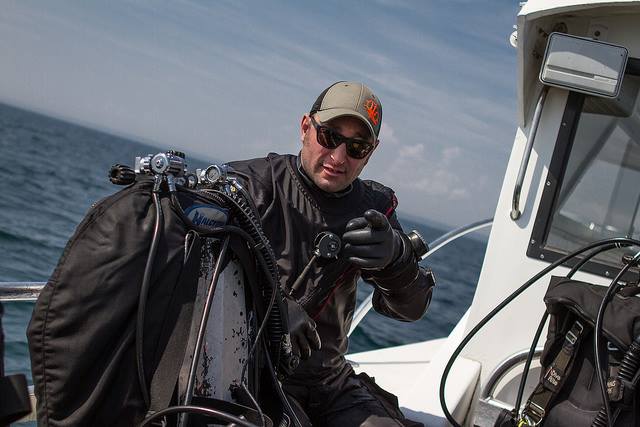|
During Episode 40 we made a few comments about a diver getting ready to do an ice dive who was wearing a pony bottle and carrying a spare air. These additional redundant air sources are classically added to the divers’ normal gear, to prepare for an emergency. But does adding this extra gas create a real solution for an emergency or does it add new confusion and complexity to the emergency? Brando and I made a comment about why it is smarter to plan your gas from the backside instead of just adding extras.
In your original scuba training you most likely learned that in the event of a low on or out of air situation you should:
-Normal ascent on our own if possible. -Switch to pony -Can’t find it so then look for buddy? -What if it is out of gas too? Then look for buddy? -What if it is breathing wet and I panic? Do I then look for my buddie’s alternate air source? -Why would I go to a pony if the original protocol was to go to my buddy? -So, should I go to buddy and use alternate air source before the pony? -So then why carry the pony? -Because my buddy might not be there? -Because my buddy might not have enough for us to use? -If my buddy wasn’t around is the problem a gas redundancy issue or a team awareness issue? -If my buddy isn’t around so then I go to my pony and I can’t find it, what happens? -If my buddy isn’t around so I decide to go to my pony and it is out of gas too, what do I do? - Make a Controlled Emergency Swimming Ascent? -If my buddy isn’t around and I go to my pony and it is breathing wet and I panic do I skip right to the buoyant emergency swimming ascent? Planning your gas from the backside means that you need to know on all dives how much gas is needed to get you and your buddy home… Assuming they lose everything. As well as having a team mate in the water that plans the same way and is always thinking the same way. This reserve is on a system that can be reliably donated 100% of the time, is completely manageable by the diver wearing it, allows two divers to continuously breathe back to safety, slowly and safely with safe ascent rates and stops, and is a different amount depending on depth or distance home. If this concept is followed and the divers are unified in their thinking, planning and awareness, there is no need to add extra bottles… just in case. The basic original plan is the “just in case.” Good scuba education teaches this concept as the core of gas management tools.
1 Comment
|
AuthorWrite something about yourself. No need to be fancy, just an overview. Archives
November 2018
|
The Great Dive Podcast |
|


 RSS Feed
RSS Feed